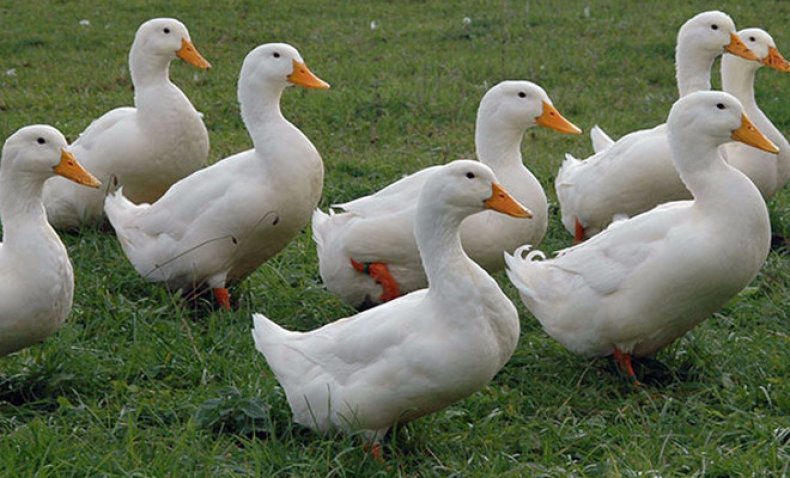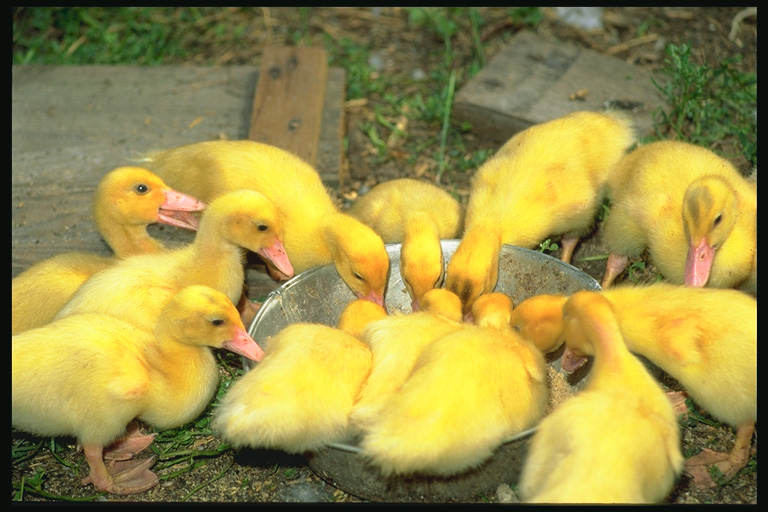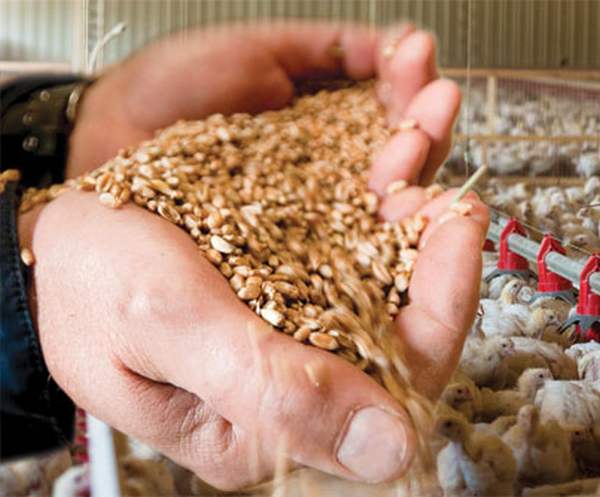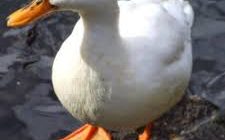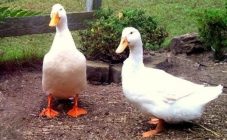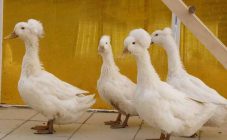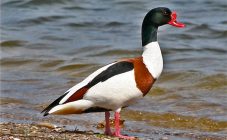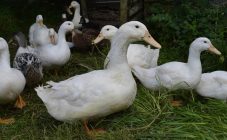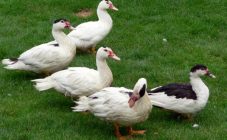Content:
The Peking White Duck is one of the oldest duck breeds of Chinese origin. It was bred, according to the name, in Beijing, more than three hundred years ago. Due to its excellent qualities, it immediately spread throughout China. From there it was brought to America and only then came to Europe, where it quickly gained wide popularity, displacing the local breeds of ducks.
The uniqueness of the Peking ducks lies in the fact that, despite a huge number of new breeds with improved performance, they hold leading positions in breeding throughout the world.
The Peking duck breed became the basis for breeding such well-known broiler-type breeds as Musk, Mulard, Bashkir, Star-53. These are fairly young breeds that have earned the recognition of experienced poultry breeders and owners of small farms.
Characteristics and description of the Peking ducks breed
The main characteristics of the Peking breed are fast growth and impressive size of ducks, beautiful white color. But there are still many factors that distinguish these birds from other crosses.
Peking duck breed description:
- Large body - large back and chest, voluminous head;
- Convex forehead, wide orange beak;
- The neck is not long, curved;
- The tail is small, raised up;
- Thick plumage of white, in rare cases, cream color;
- The weight of adult ducks is 5-4 kg, the drake can weigh 4.5 kg.
Thanks to such external data, Peking ducks can look very attractive. They always keep in flocks, very neat and clean - it's a pleasure to watch them.
Characteristics of the Peking duck breed:
- The breed is meat type;
- Fast and effective weight gain - a six week old duckling can weigh up to 3 kg. The bird gains optimal weight in 4 months;
- Quite good egg production - up to 140 eggs per season, weighing about 90 grams;
- Marketable product yield - 70%;
- Both households and large industries are suitable for growing;
- They are unpretentious to the conditions of detention - they tolerate the cold well, are picky about feed;
- Eggs are rarely incubated;
- High palatability - tender, soft meat. In an adult duck, it is quite fat.
An interesting feature of this species is their noisiness and loudness, especially of ducks, drakes a little calmer.
Breeding and care
The Peking duck grows and develops well in different climates, especially when there is proper home care. Breeding and rearing ducks is a cost-effective and quite profitable occupation, moreover, if properly organized, it is practically waste-free.
You can raise ducks only for personal use, or you can take this business seriously and establish a whole production. Duck meat, eggs, down are suitable for implementation. Litter is generally considered the best organic fertilizer. Ducklings are very popular - diurnal or slightly grown, birds of reproductive age - for offspring.
For a productive result, you should know some of the features of the process.
Breeding chickens
The main rule of good fertilization is that no more than 4 ducks should fall on one drake.
Ducks of this breed, although egg-laying, rarely hatch chicks. To obtain offspring, it is worth using an incubator or using the method of laying eggs under another hen. Often a chicken acts as a brood hen.
The incubation period is 28 days. It should be noted that the Peking breed ducklings tolerate the adaptation process quite well. The survival rate after biting is high - about 80%. And in the process of growth, chicks rarely succumb to diseases, unlike, for example, broiler chickens. The only factor that threatens the health of ducklings is lameness.
After biting, the chicks are placed in brooders and provide a stable high temperature (about 30 degrees) and humidity of 65-70%. Ducklings need constant lighting - you can use ordinary incandescent bulbs.
Feeding takes place the next day and consists of chopped boiled eggs, chopped cereals. After a couple of days, you can introduce fermented milk products, including cottage cheese, into the diet.
At the age of three weeks, the temperature in the ducklings' area is gradually reduced to 15-17 degrees. Unlike broiler chickens, which are sensitive to lower air temperatures and worsening weather conditions, Peking broilers grow well and thrive even in late autumn.
You should also take into account the area allocated for keeping ducklings: no more than 15 individuals can be accommodated per 1 square meter.
Gradually, compound feeds, herbs, table salt are introduced into the diet. As vitamin supplements, you can use wood ash, chalk, crushed eggshells, yeast. At the age of one month, the chicks are already calmly released into the pasture and pond.
The diet
Peking duck is noted for its excellent appetite and fast weight gain. In large productions, due to the greater number of special additives, the poultry gains optimal weight in 2 months. At home, it is preferable to use natural feed, while the growing time is slightly stretched - up to 3-4 months.
Birds of this breed eat almost everything. But you need to monitor the completeness of the diet. It is required to maintain a balance between protein and carbohydrates. The most optimal feeding option is a complex of grain crops, bone meal, succulent feed, heat-treated fish and meat products, root crops.
Conditions of detention
Peking ducks can be kept in a closed or semi-closed way:
- The closed method consists in raising ducks in cages. In this case, the area should be calculated: it is permissible to place 4 adults per one square meter. In addition, this method requires careful monitoring of the cleanliness in the cages, constant lighting, equipped places for laying eggs, the presence of feeders, drinkers.
- The semi-closed method combines the possibility of walking in the pasture and the presence of a chicken coop, preferably combined with one exit. The ideal option would be the presence of natural reservoirs for swimming and feeding the ducks. Feeders, drinkers, containers with gravel and sand are placed along the perimeter.
Diseases
Peking ducks are quite resistant to diseases, but in some cases they can be exposed to diseases:
- Avitaminosis - characterized by lethargy, lack of appetite, poor weight gain. Prevention is a properly selected diet;
- Enlarged goiter - appears as a result of swallowing large pieces of food. It is eliminated by cleansing the goiter;
- Coccidiosis - characterized by apathy, impaired egg production, bloody droppings. Coccidin and sulfamedizin are used as prophylaxis.
Advantages and disadvantages
Undoubtedly, the Peking duck has a lot of positive qualities:
- Fast and effective weight gain;
- Excellent taste;
- Undemanding care;
- Good egg production;
- Disease resistance.
The minor disadvantages include:
- Reluctance to hatch offspring;
- Noisiness;
- Sensitivity to excess moisture.
Peking duck is rightfully considered one of the best meat breeds for growing in households. Adaptability to different conditions of keeping, resistance to low temperatures, high productivity rate make the cultivation of this bird attractive and quite profitable.
